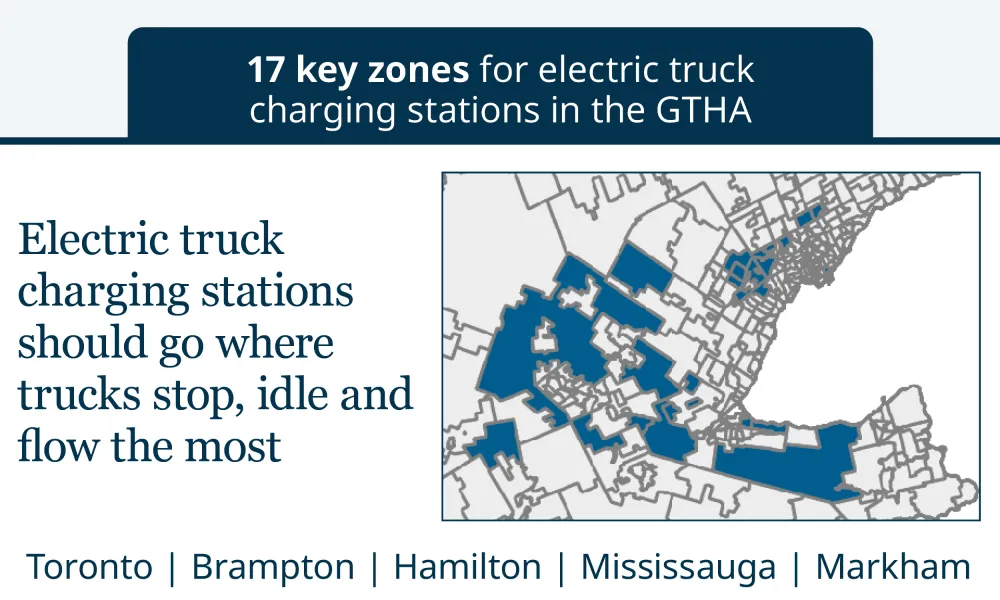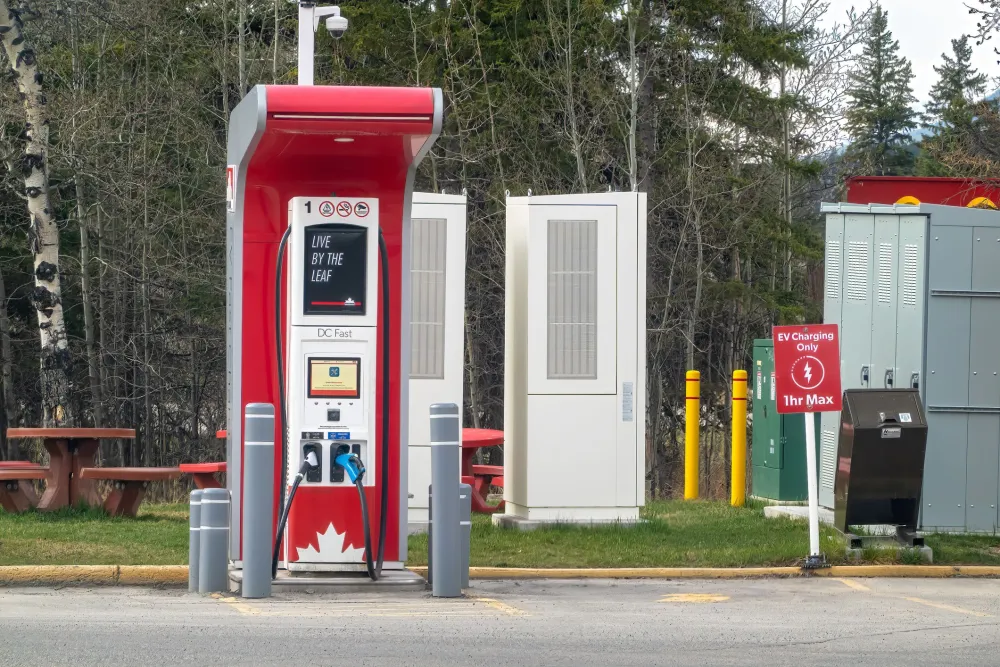As the world moves toward vehicle electrification, Canada’s transportation sector has a major opportunity to modernize. Electric trucks and buses aren’t just cleaner, they’re poised to reshape costs, efficiency and competitiveness in Canada’s transportation sector. They use energy more efficiently than diesel vehicles, and lower fuel, ownership and maintenance costs, which can save fleet operators thousands of dollars each year, improving margins and strengthening their business. Beyond the financial upside, electrifying trucks also reduces diesel-related air pollution, improving local air quality and public health in the communities these vehicles serve.
But while electric trucks offer clear benefits, these advantages can only be realized if vehicles can be reliably charged. Charging infrastructure is critical to supporting the switch to electric vehicles. In fact, a 2023 survey by Natural Resources Canada found that 79 per cent of fleet operators highlighted the lack of public charging stations as one of the biggest barriers to adoption. Smaller operators, in particular, often lack the space or capital to install private chargers, making public infrastructure critical to keeping their vehicles — and their businesses — running smoothly.
However, deploying charging infrastructure in Canada remains slow. Natural Resources Canada data also shows that the Greater Toronto and Hamilton Area currently has no publicly accessible fast chargers (350kW or higher, needed for quick en-route charging) for heavy-duty trucks, and just five for medium-duty vehicles. Expanding this network will give fleet operators the certainty they need to adopt electric vehicles, lower operating costs and grow their businesses.
A coordinated, phased strategy — starting with identifying key locations with the highest traffic for initial public charging deployment — can help streamline planning, regulatory approvals and electricity grid upgrades while ensuring that each charger delivers maximum impact. For example, the U.S. National Zero-Emission Freight Corridor Strategy prioritizes deployment around key freight zones and corridors. Our forthcoming analysis of public electric truck charging economics in Canadian cities shows that this approach can reduce infrastructure costs and increase utilization, particularly in the near term.
To inform such a phased strategy in Canada, our recent study, Locating Charging Stations applied a data-driven approach to identify candidate locations for early public charger deployment. Using real-world data on daily truck and van movement across summer and winter months, we developed a three-criteria model considering traffic volume, stop duration, and frequency of daytime stops. Our Greater Toronto and Hamilton Area-focused case study identified priority zones for early public deployment, including five FSAs in Toronto (M9W, M9V, M9L, M3J, M4M), three FSAs in Brampton (L6S, L6T, L6W) four FSAs in Hamilton (L0R, L8H, N0B, L8E), three FSAs in Mississauga (L4T, L5W, L4W), and two FSAs in Markham (L3T, L6G).

While these insights are directly applicable to the Greater Toronto and Hamilton Area, future analysis will extend to other jurisdictions. And building on this approach, Canada, too, needs a phased long-term strategy for public charging infrastructure. We recommend:
- Federal, provincial and municipal governments coordinate and identify priority zones within municipalities, along in-province trucking corridors, and national highways for medium- and heavy-duty vehicle charging stations.
- Policymakers streamline permitting processes in priority zones to reduce regulatory delays.
- Further, because it takes years to plan and install stations, geospatial maps of proposed public charger station sites (to be operational over the next three to five years) should be made publicly available to help utilities plan electrical upgrades and allow fleet operators to optimize freight routing.
Canada has an opportunity to modernize its freight sector. But seizing this opportunity depends on building charging infrastructure that keeps pace with vehicle adoption. By building a reliable public charging network, we can deliver lower costs for businesses, cleaner air for communities and a freight system ready to compete in a changing global economy.










